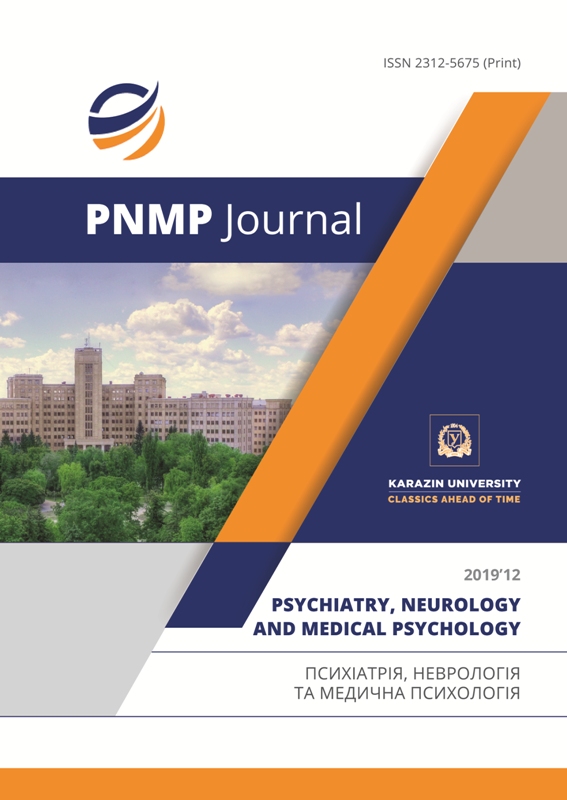Personal characteristics of patients with schizoaffective disorder in the remission period as a sign of post-manifest pathopersonological transformations
Abstract
A quantitative and qualitative analysis of personality characteristics in patients with schizoaffective disorder was carried out, and nospecific signs of post-manifest pathopersonalogical transformations were established using the standardized method of personality research. During the survey, a stress response was observed as a natural response to interference with the inner world of the individual. There was a certain increase in diligence, self-criticism and openness in the survey. The mood was unstable, there was a tendency to dissatisfaction with themselves, a sharp change in attitude towards others under the influence of fleeting emotions and circumstances. Declaring an active life position was inconsistent with actual behavior. The L score was 49.41±8.84 T points, indicating no effort to make a better impression on examination. The score obtained on the F scale was 62.07±8.47 T-points, what is a reflection of the state of distress, anxiety, emotional instability caused by internal psychological problems. The K scale was 55.43±8.58 T-points, indicating that the subjects did not want to deny the presence of problems and that they were sensitive about their personality and behavior. The revealed pathopersonological transformations are characterized by signs of multidirectional tendencies of compensatory tension of personal resources, which is confirmed by the presence of several moderately elevated (65-75 T-points) indicators of individual scales and a simultaneous increase in the hypostenic scales (scale 2 = 65.36 ± 12.28 T-points) and hypersthenic (indicators of scales 4 and 9 = 73.23 ± 11.83 and 66.05 ± 12.02 T-points, respectively) registers. The use of the obtained data will help to improve the quality of diagnosis and assessment of the current state of patients with schizoaffective disorder, which will allow the formation of a system of treatment and rehabilitation measures based on the principles of a personalized approach.
Downloads
References
Murru, A., Manchia, M., Tusconi, M., Carpiniello, B., Pacchiarotti, I., Colom. F., & Vieta, E. Diagnostic reliability in schizoaffective disorder. Bipolar Disorder, 2016, 18(1), pp 78–80. DOI: 10.1111/bdi.12366
Pidkorytov, V. S., Sazonov, S. O., & Baybarak, N. A. (2014). Diagnostic features of schizoaffective disorder in the spectrum of affective-paranoid states. Medychna psykholohiia, 2014, vol 9(3), pp 71–77. [in Ukrainian]. http://nbuv.gov.ua › j-pdf › Mpsl_2014_9_3_2.
Maruta N.O., Pan’ko T.V., Fedchenko V.Yu., Semikina G.U., Ternkovskiy D.I. Diagnostic criteria for depressive disorders at the stages of medical care]. Ukrainskyi visnyk psykhonevrolohii, 2017, vol 25, № 1, 135 p. [in Ukrainian]. http://nbuv.gov.ua/UJRN/Uvp_2017_25_1_135
Gurovich I.Ya., Shmukler A.B. Psychosocial and cognitive therapy and rehabilitation of the mentally ill. Practical Guide: Collective Monograph. 2015, P. 420. Moscow. [in Russian]. ISBN 978-5-98803-328-8
Khomitskyi M. Ye. Psychopathological manifestations of endogenous psychoses in remission / intermission state as a predisposal factor to personological transformations (comparative analysis). Zaporozhye medical journal, 2018, vol 20, № 5(110), 696–700. [in Ukrainian]. DOI: 10.14739/2310-1210. 2018.5.141541
Sobchik L. N.Standardized multivariate method of personality research SMIL. 2000, P. 219. St. Petersburg. [in Russian].

